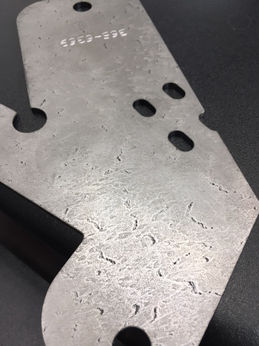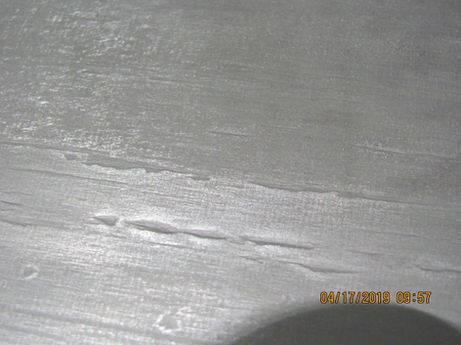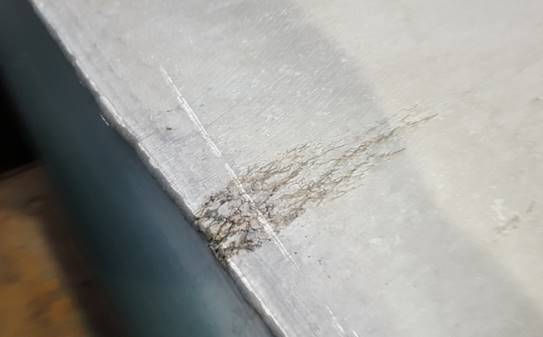Hot Mill Defects
Rolled in scale
Can range from fractured streaks to irregular blemishes. Oftentimes scale will remain in the marking. May be deep or very shallow, depending on when (and how much of) the scale was rolled in during processing.
Silicon streaks
Elongated, shallow streaks that have a dull appearance. Silicon streaks are a version of rolled in scale; high silicon grades produce a silicon rich scale (fayalite) when the slabs are in the reheat furnace. This tenacious scale gets rolled in at the hot strip mill, and leaves the elongated pattern when it's removed during pickling. This scale starts to develop around 0.25% silicon and is more evident around 0.50%.
Scabs
Schmutz (usually metallic debris) rolled in at the hot strip mill; usually irregular and severe.
Roll marks
A mark that repeats at a consistent interval. These marks are caused by debris stuck to the rolls, which causes a depression as it comes into contact with the steel.
Hot mill bruise
A slightly raised mark that repeats at a consistent interval. Bruises are similar to roll marks, but instead of debris, they are caused by an indentation on the roll.
Hot Short Tears
Surface cracking associated with higher levels of copper. Copper concentrates at the surface during the early stages of hot rolling and causes tearing along austenitic grain boundaries.
Furnace Tears
A lamination-like defect that is transverse to the rolling direction. Reheat furnaces that use arms to push slabs through the furnace (as opposed to walking beam furnaces) can cause tears on the bottom side of the slabs. If the hot strip mill has a coil box, the furnace tears will be visible on the top surface of the coil.





































